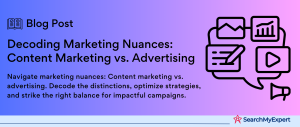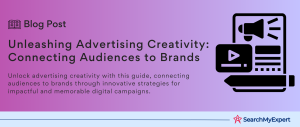Traditional Advertising vs. Programmatic Advertising
Traditional Advertising: The Classic Approach
In the realm of traditional advertising, picture a bustling marketplace. Companies huddle in conference rooms, navigating the intricate dance of direct deals and manual negotiations. This world is tactile and tangible, where handshake deals and personal connections reign supreme. Brands and publishers alike immerse themselves in this hands-on approach, crafting campaigns that resonate with their audiences through TV, print, radio, or billboards. It’s a world of physical ad spaces and scheduled air times, where the human touch dictates the pace.
The Rise of Programmatic Advertising: Automation Takes Center Stage
Enter programmatic advertising, the digital revolution’s answer to the time-honored practices of traditional advertising. Imagine flipping a switch and watching an intricate web of algorithms and data sets come to life, targeting your ideal audience with laser precision. Programmatic advertising is this automated powerhouse, a system designed to purchase and optimize digital campaigns more efficiently and effectively than humanly possible.
Key Benefits of Programmatic Advertising
- Efficiency Unleashed: Bid farewell to the lengthy manual negotiations. Programmatic platforms use real-time bidding, making ad buying faster and more efficient.
- Unprecedented Reach: Spread your message across the globe or drill down to niche audiences with unparalleled ease.
- Targeting Perfection:
Harness the power of data to reach the right person, at the right time, in the right context.
Demystifying the Jargon
Understanding the Buzzwords
In the labyrinth of programmatic advertising, jargon is the Minotaur. Let’s conquer these terms with simple explanations:
Ad Exchanges: The Digital Marketplaces
Think of ad exchanges as bustling digital marketplaces. Here, publishers offer their ad spaces and advertisers bid for them, much like an auction house for digital real estate.
DSPs (Demand-Side Platforms): The Advertisers’ Toolkit
DSPs are like high-tech shopping carts for advertisers. They allow advertisers to buy ad spaces across various ad exchanges, optimizing their campaigns using real-time data.
SSPs (Supply-Side Platforms): The Publishers’ Champion
SSPs stand as the guardian angels for publishers. They help publishers sell ad space to the highest bidder, ensuring maximum revenue for their digital property.
Impressions: The Currency of Attention
An impression occurs each time an ad is displayed to a user. Think of it as a digital footprint, marking the presence of your ad in the digital world.
The Ecosystem Players
Each player in the programmatic advertising ecosystem has a distinct role:
- Ad Exchanges: The connective tissue, linking buyers and sellers in the digital ad space.
- DSPs: The advertisers’ ally, optimizing the purchase and placement of ads.
- SSPs: The publishers’ advocate, maximizing the value of their ad space.
The Auction Process in Programmatic Advertising
The Real-Time Bidding Arena
Picture an auction, but at the speed of light. This is the heart of programmatic advertising. Advertisers battle for ad space in a digital auction, where milliseconds are the measure of time. In this high-speed environment, ad spaces on websites or apps are sold to the highest bidder, and the ad is displayed to the user almost instantly.
Key Factors in the Bidding Process
- Targeting Criteria: Advertisers define who they want to reach based on demographics, interests, and behavior.
- Budget Constraints: Each advertiser sets a budget for how much they are willing to spend.
- Ad Value:
The perceived value of an ad space, based on factors like website traffic and user engagement.
Types of Auctions
- First-Price Auctions:
The highest bidder wins and pays exactly what they bid. - Second-Price Auctions:
The highest bidder wins but pays one cent more than the second-highest bid.
Targeting Powerhouse
The Role of Data in Programmatic Advertising
In the realm of programmatic advertising, data is king. It enables advertisers to slice through the vastness of the internet and pinpoint their ideal audience with surgical precision.
Defining Audience Segments
- Demographics:
Age, gender, income level, and more. - Interests: Hobbies, preferences, and lifestyle.
- Online Behavior:
Browsing history, purchase patterns, and digital footprints.
Advanced Targeting Techniques
- Lookalike Audiences: Finding new customers similar to your existing ones.
- Geofencing: Targeting users based on their real-time physical location.
Beyond Display Ads – The Expanding Universe of Programmatic Advertising
Expanding the Arsenal: More than Just Banners
Programmatic advertising has leaped beyond the traditional confines of banner ads, venturing into a diverse array of formats:
- Video Ads:
Not just confined to pre-rolls, but also in-stream and out-stream video ads. - Native Ads:
Seamlessly integrating into the user’s experience, native ads are designed to feel less intrusive. - Connected TV:
As TV and internet become more intertwined, programmatic advertising finds its way into the living rooms of the connected TV audience.
The Rise of Programmatic Guaranteed Deals
Imagine having VIP access to premium ad placements. Programmatic guaranteed deals offer just that – a direct pipeline to high-value ad spaces. These deals combine the precision of programmatic targeting with the assurance of fixed pricing and guaranteed impressions, typically for premium content spots.
Programmatic in Action: Industry Examples
- Retail:
Using geofencing to target potential customers near physical stores. - Automotive:
Running native ads in automotive blogs and websites for specific car models. - Travel: Targeting frequent travelers with video ads on travel advice websites.
The Measurement Maze
Navigating the Complexities of Campaign Success
Measuring the success of programmatic campaigns can be akin to finding your way through a labyrinth. With an array of metrics and data points, the path to understanding campaign effectiveness can be complex.
Key Metrics to Track
- Impressions: The reach of your ad.
- Clicks: Engagement level with the ad.
- Conversions: The ultimate goal – did the ad lead to the desired action?
- Viewability: Was the ad actually seen by users?
The Importance of Attribution Models
Choosing the right attribution model is like picking the right map for your journey. It helps advertisers understand which parts of their campaigns are driving conversions and assists in distributing credit among different touchpoints in the consumer journey.
Emerging Trends Shaping the Future
As we peer into the horizon of programmatic advertising, several key trends emerge, promising to redefine the landscape:
AI-Powered Bidding: Smarter, Faster, More Efficient
Artificial Intelligence (AI) is set to revolutionize the way bidding occurs in programmatic advertising. By harnessing the power of AI, advertisers can:
- Predict Consumer Behavior:
AI can analyze vast amounts of data to predict which ads are likely to resonate with which audience segments. - Optimize Bids in Real-Time:
AI algorithms can adjust bids on the fly, ensuring advertisers get the best value for their ad spend. - Enhance Creativity and Personalization:
With AI, ads can be tailored to individual preferences, increasing relevance and engagement.
Privacy-Focused Solutions: Balancing Personalization and Privacy
In a world increasingly conscious of data privacy, programmatic advertising faces a critical challenge. The industry is pivoting towards privacy-focused solutions:
- Consent-Based Advertising: Emphasizing user consent for data usage, ensuring transparency and trust.
- Contextual Targeting:
Focusing on the context of the web page or app, rather than personal data, to place relevant ads. - Privacy-First Browsers and Platforms: Aligning with platforms that prioritize user privacy, adapting strategies to work within these environments.
Potential Impact of Emerging Trends
These trends are not just fleeting; they carry the potential to profoundly impact the programatic advertising landscape:
AI-Powered Bidding
- Increased Efficiency and ROI:
AI’s ability to analyze and act on data rapidly will lead to more efficient ad spends and higher ROI. - Dynamic Creative Optimization: Ads will dynamically adapt to user preferences, making each ad more relevant and engaging.
- Predictive Analytics: AI will enable advertisers to anticipate market trends and consumer needs, staying ahead of the curve.
Privacy-Focused Solutions
- Building Trust with Audiences:
By respecting user privacy, brands can build stronger, trust-based relationships with their audiences. - New Strategies for Targeting: As reliance on personal data decreases, advertisers will innovate new ways to reach their audience, like contextual and behavioral targeting.
- Compliance and Reputation: Aligning with privacy standards will not only ensure compliance but also enhance brand reputation.
The Future: Optimistic and Evolving
Looking ahead, the future of programmatic advertising is bright and full of potential. As the industry evolves, it continues to offer unparalleled opportunities for brands and advertisers:
- Adaptation to New Technologies: Programmatic advertising will continue to evolve, embracing new technologies like 5G, AR, and VR, providing even more immersive and engaging ad experiences.
- Greater Transparency and Control:
With advancements in technology and a focus on privacy, advertisers and publishers will have greater control and transparency over their campaigns. - Global Expansion and Accessibility: Programmatic advertising will expand its reach globally, making it accessible to more brands and businesses of all sizes.
Conclusion
The journey of programatic advertising is one of continuous growth and evolution. With the integration of AI, emphasis on privacy, and the adaptation to new technologies and market demands, programmatic advertising is poised to remain at the forefront of digital marketing. The future promises greater efficiency, deeper audience engagement, and a stronger alignment with consumer needs and privacy expectations. As the industry navigates these changes, it will undoubtedly uncover new opportunities and pathways for success, cementing its role as a key player in the digital advertising world.
Join forces with renowned Advertising Agencies for impact.
Table of Contents
Toggle






